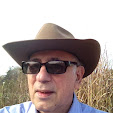My previous discussion of remarkable biographies of John Quincy Adams and his wife Louisa Catherine- published in 2014- can be accessed by
clicking here.
8.
NELSON ROCKEFELLER IS ANOTHER 'LARGER THAN LIFE' FIGURE,
who leveraged his legacy, his unlimited financial fortune, to rewrite dramatically political information gathering protocol and left behind a monumental architectural accomplishment.
His life was one of using his vast fortune and influence for the sake of PUBLIC SERVICE.
I am indebted to
Jeffrey Frank's article "Big Spender" which appeared in the Books section of the New Yorker last year. Here he reviewed Richard Norton Smith's "On His Own Terms: A Life of Nelson Rockefeller" (Random House).
Nelson was the son of John D. Rockefeller, Jr. the man who built Rockefeller Center and the grandson of John D. Rockefeller Sr. the founder of Standard Oil who was once the richest man in the world.
He thrust himself into government service in a big way with no strong family mentors and public service role models as had John Quincy Adams. It was thus natural for Nelson to use his vast fortune to buy 'brain trusts' to advise him.
Vice President Nelson Rockefeller (on right)
with Secretary of State Henry Kissinger 1/3/75;
in 1956, Rocky created the
Special Studies Project
a major seven panel planning group directed by Kissinger
from Wikipedia
Though Eisenhower did not bestow upon him Cabinet rank for the new Department of Health, Education and Welfare, Nelson showed unflagging skills and unlimited energy as an under-secretary. Ike then shifted him over to the State Department in 1955 as a special assistant for cold war strategy. Here he surrounded himself with large numbers of paid assistants such as Henry Kissinger then a Harvard Professor and Edward Teller, the "father of the Hydrogen bomb."
At one point, Rockefeller had forty-seven (47) people on his staff. He was, in effect, running his own 'shadow' department of State which was a foil, though a weak one, to that of John Foster Dulles, the Secretary of State. The latter commented rather understatedly and snidely at the time that "there is growing evidence that [Rockefeller] is going into business in a rather big way."
When he bested Averill Harriman, a scion of the wealthy railroad empire, in the election for Governor of New York State, Rockefeller continued his penchant for creating "large staffing" in the form of task forces. Smith writes that as the new governor, he "convened more than forty (40) study groups"- to consider various issues ranging from pilot safety, increasing milk consumption to the state's electric power consumption.
Smith enumerates his accomplishments; under his administration, the State University of New York grew from thirty-eight thousand students and twenty-nine schools to about a quarter of a million students on sixty-four campuses.
"The state added fifty-five state parks, more than a hundred hospitals and nursing homes, and two hundred water-treatment plants and undertook a billion-dollar highway construction program.
Health and welfare programs expanded and the new Department of Environmental Conservation, which predated the federal Environmental Protection Agency, took on such issues as vehicle emissions, mercury in waterways and pesticides." (Franks, p. 116) )
He served as Governor of New York State for four terms from 1959-1973.
Rocky accepted, with great reluctance, Ford's invitation to serve as his Vice President (1974-1977) after Nixon was forced to resign under the cloud of Watergate. In this position he lent stability and credibility to the office especially after the forced resignation of Vice President Spiro Agnew (1969-1973) under Nixon.
He never made it to the White House because of his frequent wavering, perhaps betraying a certain ambivalence about serving in the high office. Frank says: "Rockefeller never had a realistic idea of what was required to be nominated, such as winning actual delegates." (116)
Aerial view of the Empire State Plaza, looking
eastward to the Hudson River
from Wikipedia
Frank concludes his homage to Rockefeller by discussing the vast and exorbitant construction of the
Empire State Plaza also known as the South Mall in Albany. Budgeted originally at $250 million, it wound up being built between 1959 and 1976 for an astounding $2 billion. It is described as "an outsized complex consisting of government buildings and and egg-shaped performing-arts center." (Frank, 118)
Perhaps, Nelson's obsession with his Albany project was his answer to his father's building Rockefeller Center in 1930 for the more modest sum of $250 million dollars.
Rockefeller had a way, unlike
John Quincy Adams, of relating warmly to the common man.
He had the heart and conviction of a liberal-- and the means, to fulfill his notable assertion:
"if you don't have a good education and good health, then I feel society has let you down."
Kudos to the New Yorker and authors Smith and Frank for spotlighting a very public figure: a man, who despite his personal foibles his too public womanizing, used his enormous financial legacy for the betterment of his fellow man.
Stay tuned for more to come.









